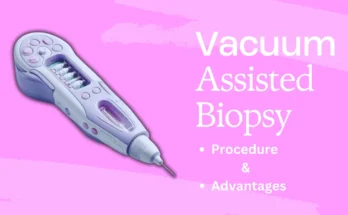
Introduction:
In the realm of women’s health, uterine artery embolization (UAE) emerges as a transformative procedure offering relief from various gynecological conditions. This minimally invasive technique provides an alternative to surgery for managing conditions such as uterine fibroids, offering improved outcomes and quality of life for countless women.
Let’s explore the intricacies of UAE, its benefits, considerations, and more in this comprehensive guide.
Table of Contents
Understanding Uterine Artery Embolization (UAE):
Uterine artery embolization, commonly known as UAE, is a specialized procedure aimed at treating uterine fibroids and other related conditions. It involves blocking the blood flow to the fibroids by injecting small particles into the uterine arteries, thereby causing them to shrink and alleviate symptoms.
The Procedure:
Uterine artery embolization (UAE) is a revolutionary procedure offering relief from various gynecological conditions, particularly uterine fibroids. This minimally invasive technique provides an alternative to surgery, with fewer risks and a quicker recovery.
Let’s walk through the step-by-step process of UAE, its benefits, considerations, and more in this comprehensive guide.
Step-by-Step Guide to Uterine Artery Embolization:
Step 1: Pre-procedure Preparation
- Before the procedure, you’ll undergo a thorough evaluation, including a physical examination and imaging tests (such as MRI or ultrasound) to assess the size and location of your fibroids.
- Your healthcare provider will review your medical history and discuss any medications you’re taking, including blood thinners, which may need to be temporarily stopped before the procedure.
Step 2: Arrival and Pre-procedure Setup
- On the day of the procedure, you’ll arrive at the interventional radiology suite or hospital.
- You’ll change into a hospital gown and be prepared for the procedure, which may include starting an intravenous (IV) line for administering fluids and medications.
Step 3: Anesthesia and Sedation
- Most UAE procedures are performed under conscious sedation or mild anesthesia to keep you comfortable and relaxed during the procedure.
- Your anesthesia provider will administer the sedative medication through your IV, and you’ll be closely monitored throughout the procedure for any signs of discomfort or complications.
Step 4: Catheter Insertion
- Once you’re sedated, the interventional radiologist will numb the area around your groin with local anesthesia.
- A small incision will be made in your groin, and a thin, flexible tube called a catheter will be inserted into the femoral artery under X-ray guidance.
Step 5: Guided Navigation to Uterine Arteries
- Using fluoroscopy (real-time X-ray imaging), the catheter will be carefully guided through the arterial system to reach the uterine arteries, which supply blood to the uterus and fibroids.
Step 6: Embolization of Uterine Arteries
- When the catheter reaches the uterine arteries, tiny particles (embolic agents) will be injected through the catheter to block the blood flow to the fibroids.
- These particles may include polyvinyl alcohol (PVA) or tris-acryl gelatin microspheres, which are designed to permanently occlude the blood vessels feeding the fibroids.
Step 7: Monitoring and Completion
- Throughout the procedure, the interventional radiologist will monitor the progress of the embolization using fluoroscopy and adjust the catheter position as needed.
- Once the embolization is complete, the catheter will be removed, and pressure will be applied to the groin area to prevent bleeding.
- A small bandage or compression device will be placed over the incision site.
Step 8: Post-procedure Recovery
- After the procedure, you’ll be monitored in the recovery area for a few hours to ensure that you’re stable and recovering well.
- Most patients can go home the same day, although some may need to stay overnight for observation, particularly if there are any complications or concerns.
- You’ll receive instructions on post-procedure care, including pain management, activity restrictions, and follow-up appointments.
Benefits of Uterine Artery Embolization:
- Minimally Invasive: UAE is performed through a small incision, resulting in less pain, shorter recovery times, and reduced risk compared to traditional surgery.
- Preservation of Uterus: Unlike surgical interventions such as hysterectomy, UAE preserves the uterus, allowing women to maintain their fertility and reproductive potential.
- Symptom Relief: UAE effectively alleviates symptoms associated with uterine fibroids, including heavy menstrual bleeding, pelvic pain, and urinary frequency.
- Outpatient Procedure: Most UAE procedures are performed on an outpatient basis, allowing women to return home the same day and resume normal activities within a few days.
- High Success Rate: UAE has been shown to have a high success rate in reducing fibroid size and improving symptoms, with long-term studies demonstrating sustained relief.
Considerations and Side Effects:
While UAE is generally safe and well-tolerated, it may be associated with certain considerations and side effects, including:
- Post-embolization syndrome: Temporary symptoms such as fever, abdominal pain, and nausea may occur following the procedure.
- Infertility: While UAE preserves fertility in most cases, there is a small risk of infertility, especially in older women or those with multiple fibroids.
- Fibroid Recurrence: While UAE can provide significant symptom relief, fibroids may recur in some cases, necessitating additional treatment.
Future Directions and Innovations:
- The field of interventional radiology continues to evolve, with ongoing research and technological advancements aimed at improving the efficacy and safety of UAE. Emerging techniques such as magnetic resonance-guided focused ultrasound surgery offer promise in further enhancing the precision and outcomes of fibroid treatment.
Conclusion:
Uterine artery embolization (UAE) represents a significant advancement in the management of uterine fibroids and related gynecological conditions. By understanding the procedure, benefits, considerations, and potential side effects of UAE, women can make informed decisions about their treatment options and reclaim control over their health and well-being.
Commonly Asked Questions about Uterine artery embolization
UAE is a minimally invasive procedure used to treat uterine fibroids. It involves blocking the blood flow to the fibroids by injecting small particles into the uterine arteries, causing the fibroids to shrink and alleviate symptoms.
UAE offers several benefits, including symptom relief, preservation of the uterus, shorter recovery times, and fewer complications compared to traditional surgery.
UAE is generally considered safe, with a low risk of complications. However, like any medical procedure, it carries some risks, including infection, bleeding, and injury to surrounding structures.
Recovery time varies from person to person but typically ranges from a few days to a week. Most women can resume normal activities within a week after the procedure.
Common side effects include cramping, vaginal discharge, and temporary changes in menstrual patterns. Rarely, more serious complications such as infection or injury to nearby organs may occur.
Yes, UAE can preserve fertility in most cases because it does not involve removing the uterus. However, it’s important to discuss fertility preservation with your doctor before undergoing the procedure.
Candidates for UAE typically have symptomatic fibroids that are causing heavy menstrual bleeding, pelvic pain, or other bothersome symptoms. Your doctor will evaluate your medical history and imaging studies to determine if UAE is right for you.
UAE has been shown to be highly effective in reducing fibroid size, alleviating symptoms, and improving quality of life for many women. However, results may vary depending on the size and location of the fibroids.
Yes, alternatives to UAE include surgery (such as myomectomy or hysterectomy), hormone therapy, and other minimally invasive procedures like radiofrequency ablation or focused ultrasound surgery.
During the procedure, you will receive sedation or anesthesia to keep you comfortable. A catheter will be inserted into the femoral artery in your groin and guided to the uterine arteries, where small particles will be injected to block blood flow to the fibroids. The procedure typically takes a few hours, and you may need to stay in the hospital overnight for observation.




One Comment on “Uterine Artery Embolization – A complete Guide”